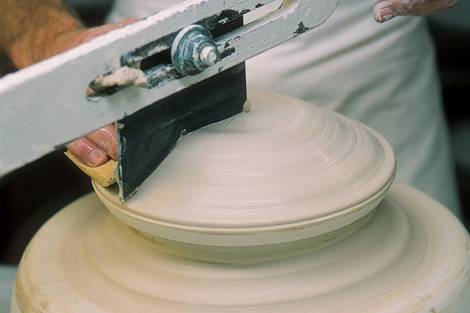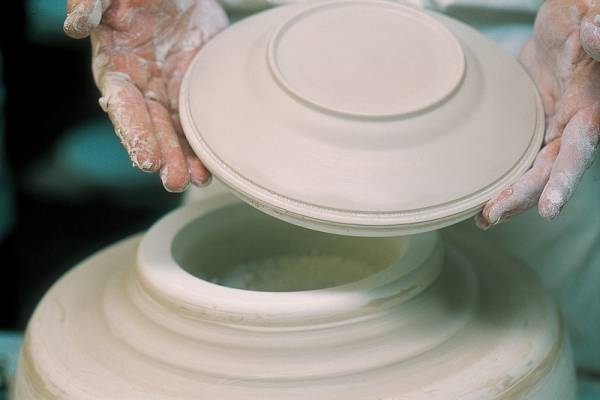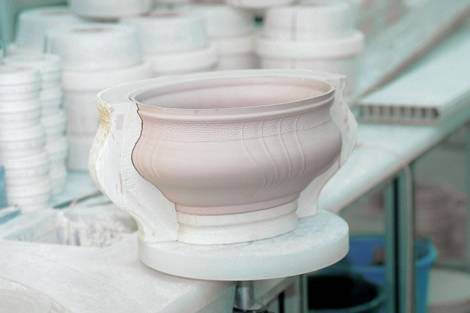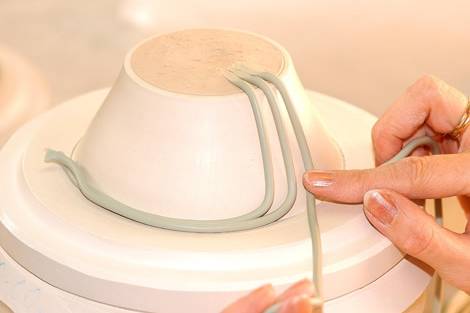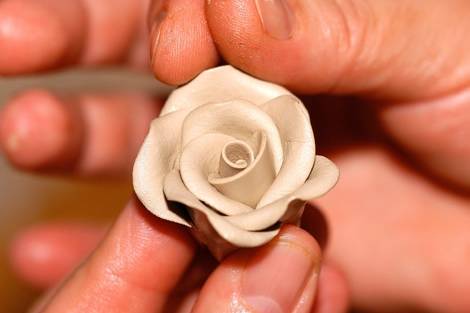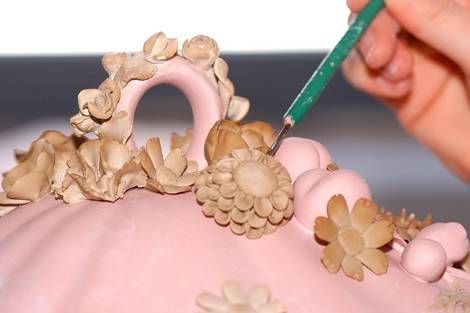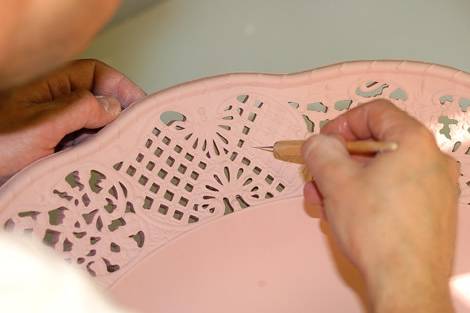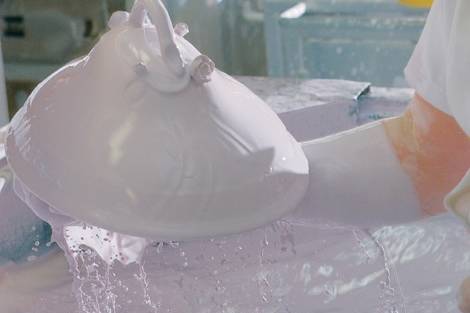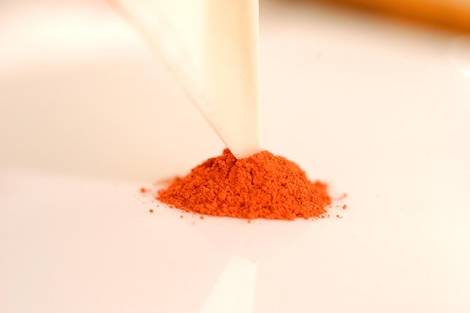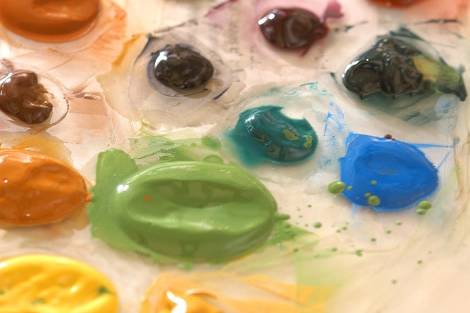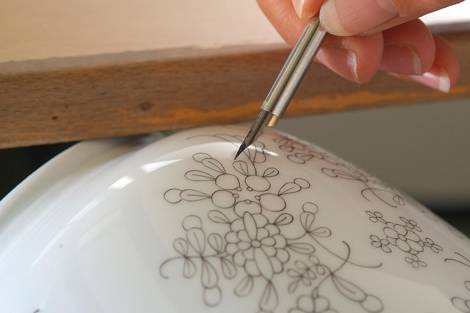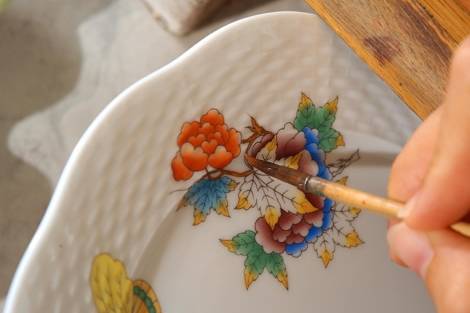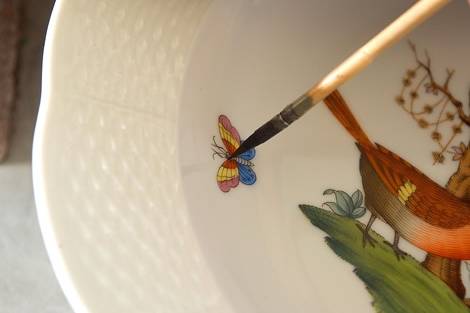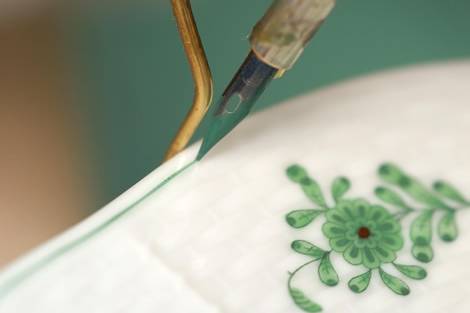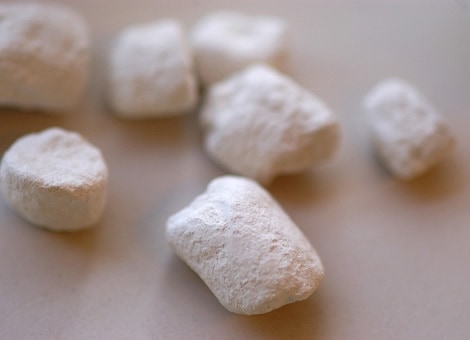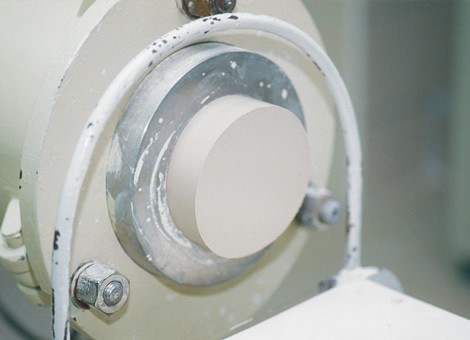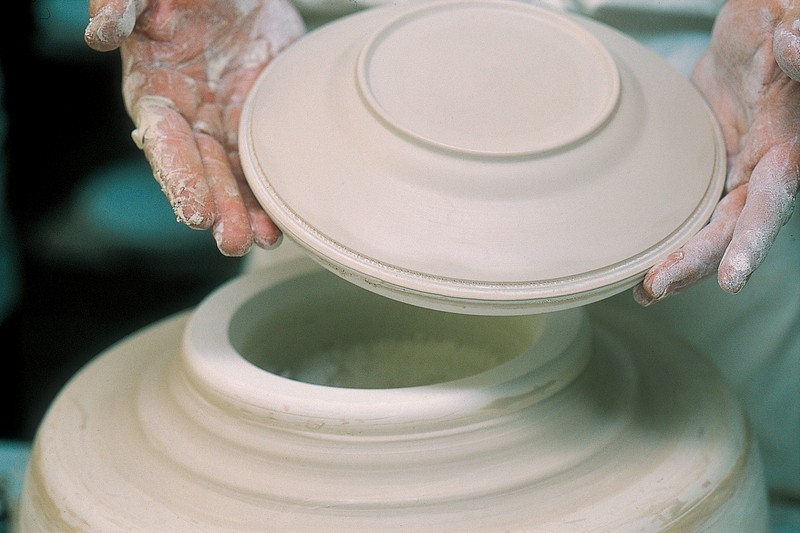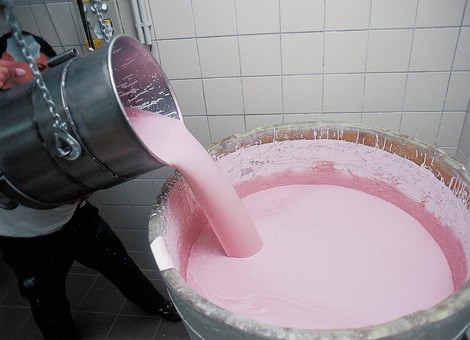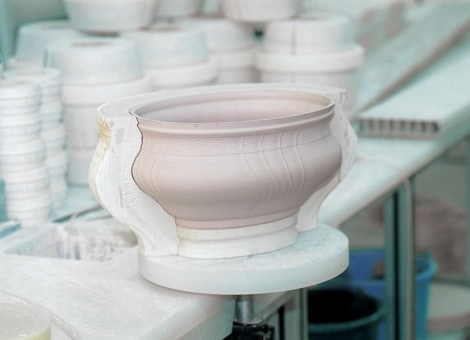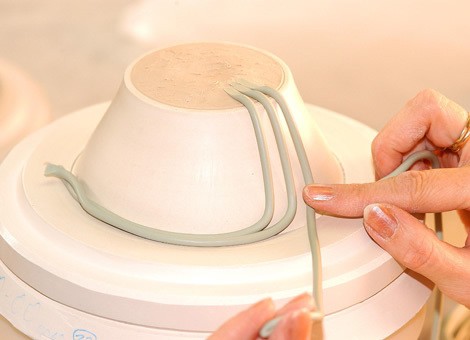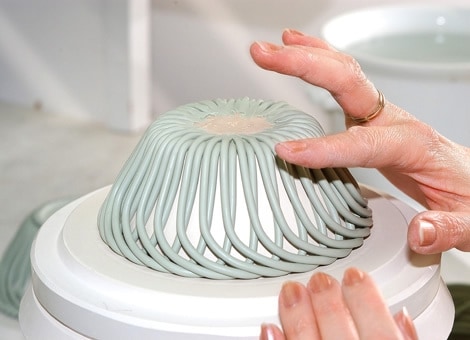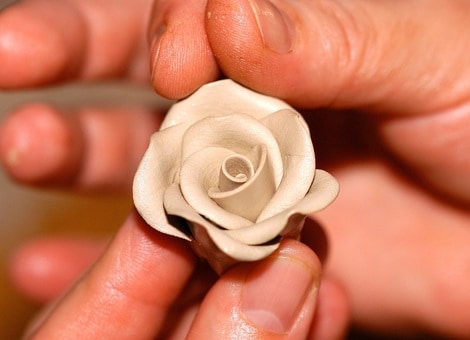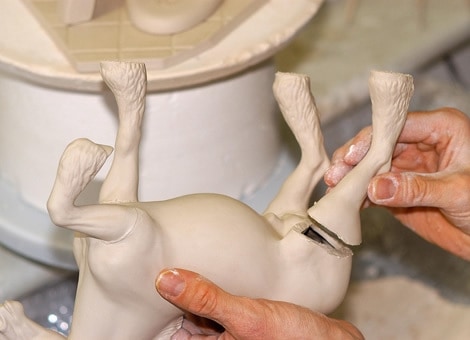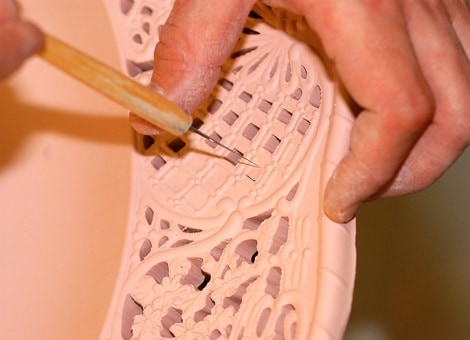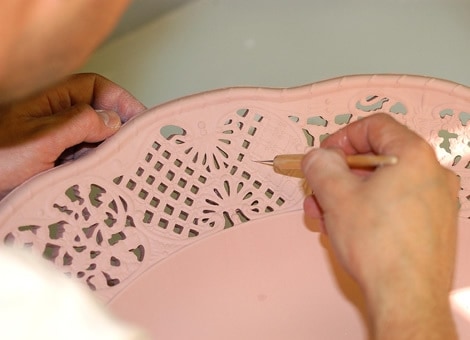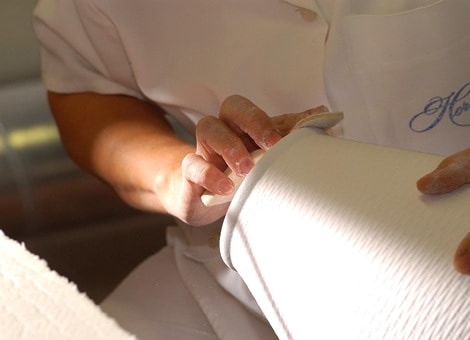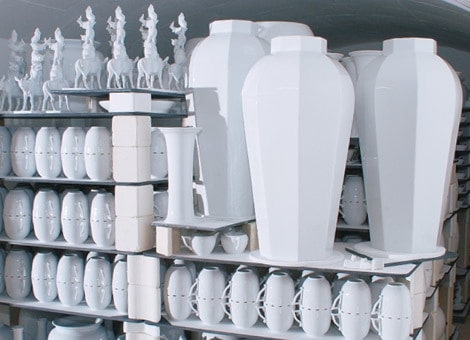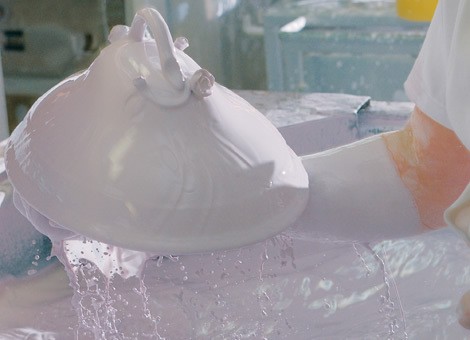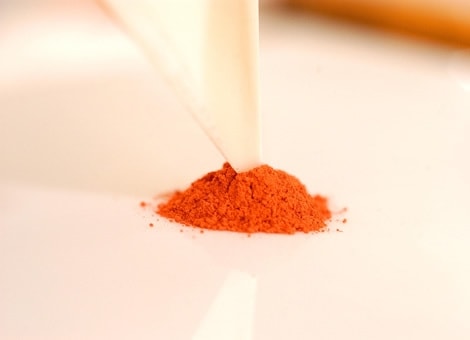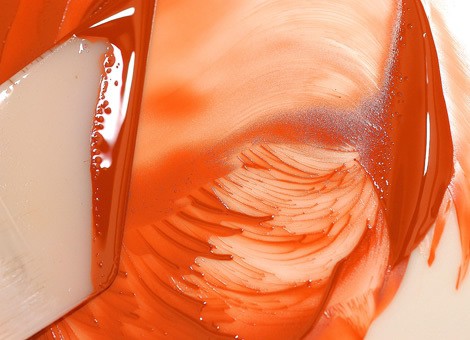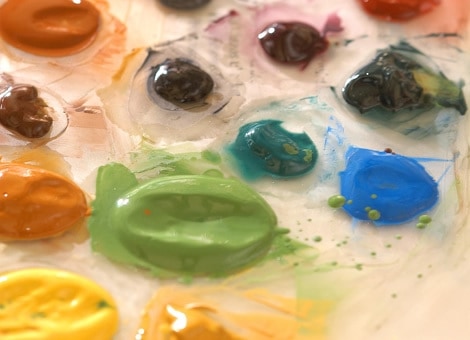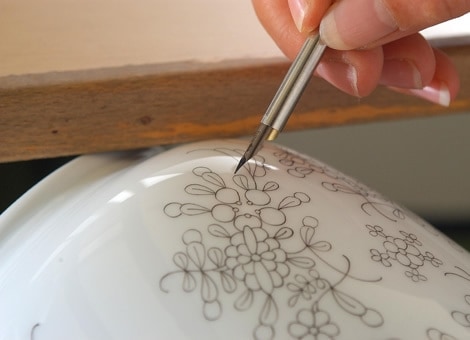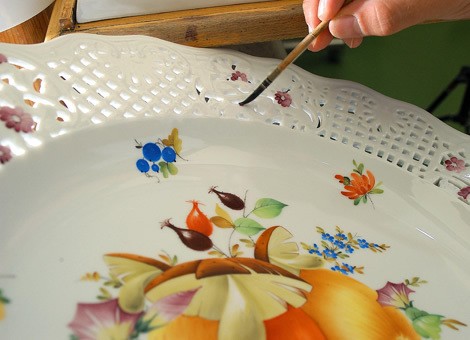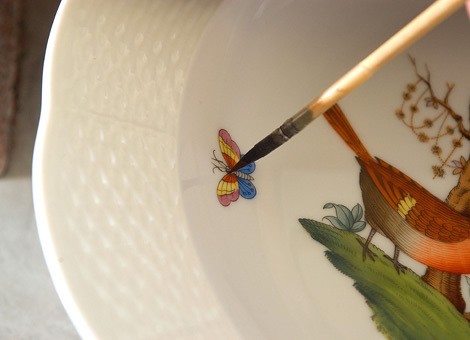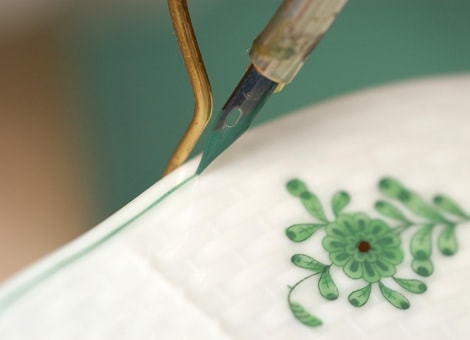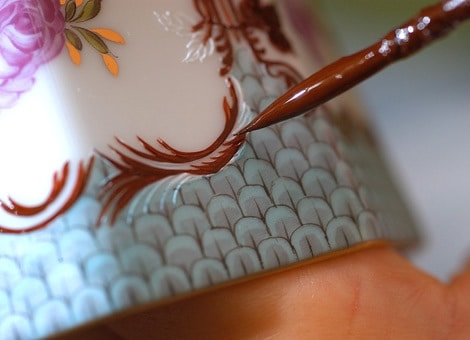Handicraft porcelain making
Get to know the technology of Herend Porcelain Manufactory comprising centuries of expertise.
Get an insight into the steps of manufacturing and decorating porcelain all the way from raw materials to the final phase of painting.
Technology gallery

THE RAW MATERIAL
Kaolin is the most important raw material of porcelain manufacturing apart from feldspar and quartz.

PLASTER MOULD MAKING
The negative of the porcelain product is being made, that is the aid of porcelain manufacturing.
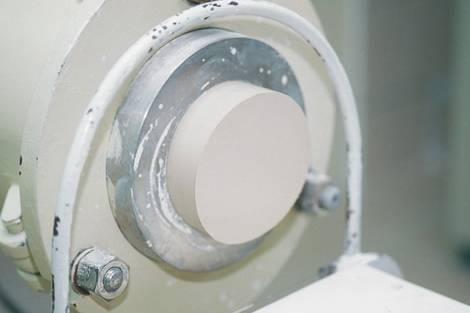
PLASTIC PASTE FOR THROWING
From the raw materials, after mixing with water, we acquire two kinds of pastes: in the picture you can see the pressing of the viscous throwing paste.
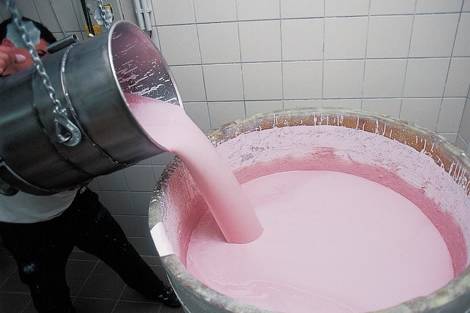
LIQUID PASTE FOR CASTING
The more viscous casting paste is produced by the addition of extra water and other additives.
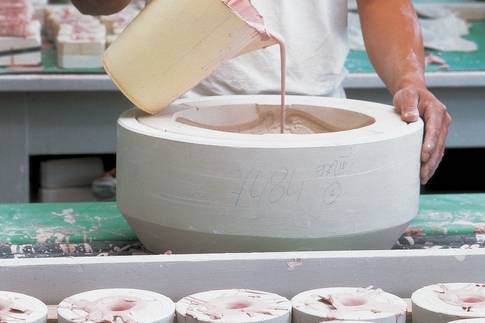
CASTING
The plaster mould absorbs a significant portion of the water content of the paste, and the solid grains stick to the wall of the mould: thus an object fitting the plaster mould can be obtained.
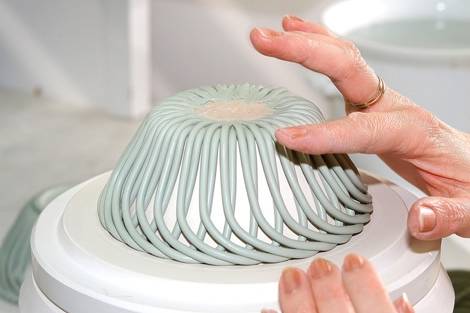
WOVEN PORCELAIN BASKET - FINAL TOUCH-UPS
The shape of the woven basket is achieved by strands that are rolled and fitted individually.
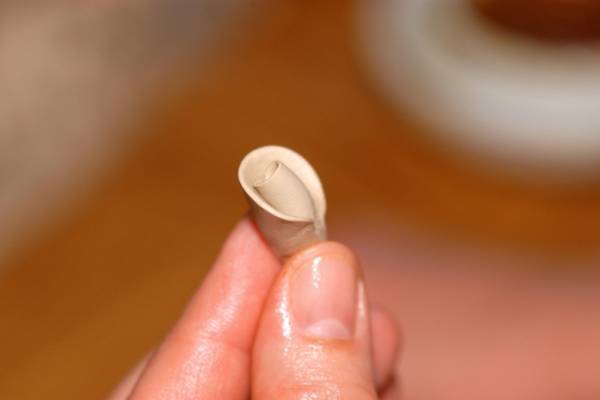
PORCELAIN ROSE - FIRST PETALS
Bewitching hands shape and put together the various flowers, petal by petal.

PUTTING THE FIGURE TOGETHER
This is the way pieces made of several parts - typically figures - are put together.

THE TOOL FOR OPEN-WORK
With a special double-edged knife, the open-work is effected with extreme precision.
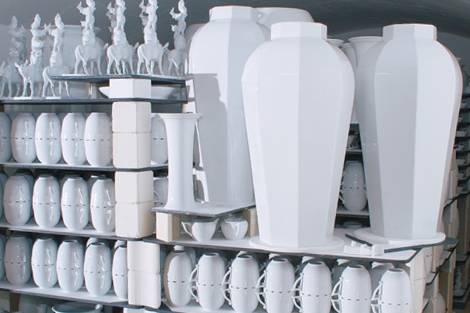
FIRST, BISCUIT FIRING
Expert hands prepare the raw porcelain objects for the first firing, which is performed at ca. 950°C.

SECOND, GLOST FIRING
The glaze is fired at a higher (ca. 1400°C) temperature, and the object gains its glistening shine.

